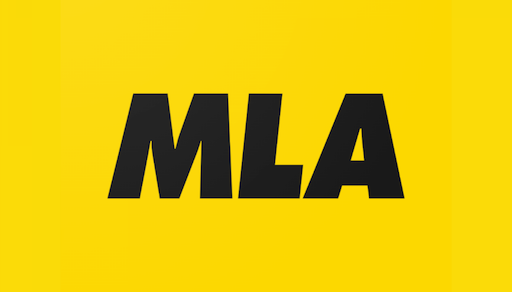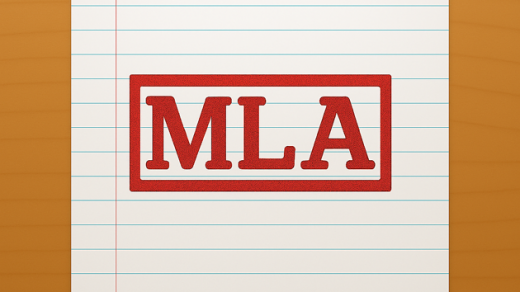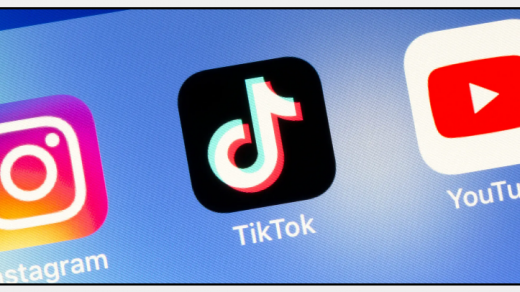As scholarship increasingly crosses disciplinary boundaries, the role of citation styles has become more complex than ever before. What was once a straightforward matter of referencing books and articles within clearly defined fields now involves datasets, online archives, audiovisual media, and algorithmic outputs. Researchers in emerging areas such as Digital Humanities, Media Studies, and Data Science must navigate not only the content of multiple disciplines but also their distinct conventions of academic communication.
Among citation frameworks, the Modern Language Association’s (MLA) 9th edition, released in 2021, remains one of the most influential—especially within the humanities. However, the rise of interdisciplinary and digital scholarship has highlighted both the strengths and limitations of MLA when compared with other dominant styles such as APA (American Psychological Association), Chicago, and IEEE. These systems reflect differing epistemological traditions: while MLA privileges textual interpretation and flexibility, APA emphasizes empirical reporting and standardization, and Chicago balances narrative depth with professional publishing conventions.
This essay offers a comparative analysis of MLA 9 alongside these other citation styles, focusing particularly on their suitability for emerging interdisciplinary fields. It examines how MLA adapts to new media, evaluates its usability in digital research environments, and identifies contexts in which alternative styles may better serve clarity and reproducibility. Through this comparison, we can better understand how citation systems embody not only stylistic preferences but also the intellectual values of their respective disciplines.
Citation Systems and Disciplinary Logic
Every citation style encodes the logic of its discipline. In the humanities, citation is not merely a record of sources but a rhetorical gesture—a way of situating interpretation and authority. The MLA style, historically rooted in literary and cultural studies, emphasizes readability, authorial attribution, and textual fluidity. Its core principle is that the author and page number should appear in the in-text citation—e.g., (Smith 45)—directing readers toward a contextual understanding of quoted material. This simplicity favors argumentative essays, critical analyses, and close readings.
By contrast, the APA style, widely used in psychology, education, and the social sciences, prioritizes date-driven referencing to highlight the timeliness of empirical findings—e.g., (Smith, 2020, p. 45). Its structure mirrors scientific reasoning, where the recency of research indicates relevance. The Chicago Manual of Style offers two major systems: Notes-Bibliography (common in history and the arts) and Author-Date (used in the sciences). Chicago’s flexibility accommodates both narrative exposition and formal documentation, making it a bridge between humanities and empirical fields. The IEEE style, standard in engineering and computer science, employs numbered references—[1], [2], etc.—to maintain compactness in technical papers.
When these styles encounter new disciplines such as Digital Humanities or Media Studies, their assumptions about authorship, permanence, and textuality are tested. In Digital Humanities, for example, a “source” may be a dynamic web archive or algorithmic dataset rather than a fixed text. MLA’s adaptability to unconventional materials—its encouragement to “cite what you see”—allows scholars to acknowledge multimedia and collaborative authorship. Conversely, in Data Science, where transparency and replicability matter most, APA’s precision or IEEE’s numeric efficiency may offer clearer frameworks for referencing datasets and software packages.
Adaptability of MLA 9 in Digital and Interdisciplinary Contexts
The ninth edition of MLA explicitly addresses the growing diversity of research materials. It replaces rigid templates with a “universal set of core elements”—author, title, container, contributor, version, number, publisher, date, and location—that can be flexibly combined to describe any source. This system allows scholars to cite everything from tweets to digital art installations, virtual reality projects, and interactive databases.
In Digital Humanities, this modular approach is particularly valuable. Projects often involve multi-layered collaboration among historians, programmers, librarians, and designers. MLA 9 enables recognition of multiple contributors—e.g., distinguishing between the project’s curator, code author, and editor. Similarly, MLA’s format for citing containers accommodates nested works: for instance, a poem within a digital anthology, itself hosted on a scholarly platform.
However, MLA’s flexibility also introduces ambiguity. Because it allows various interpretations of “container” or “location,” citations may become inconsistent across projects. A dataset hosted on GitHub might be cited differently by two researchers, depending on whether they treat the repository or the file itself as the “container.” Here, APA and IEEE excel by offering more standardized conventions for datasets, code, and technical documentation, aligning with the values of reproducibility and precision.
In Media Studies, MLA’s approach to audiovisual and online media is generally effective. Its rules for streaming platforms, television episodes, and social media posts are intuitive and detailed. For instance, a citation for a YouTube video may read: “Lecture on Film Semiotics.” YouTube, uploaded by University Media Channel, 12 Mar. 2023, www.youtube.com/… Such flexibility supports the study of ephemeral and participatory media. Yet, in empirical analyses of audience data or algorithmic behavior, APA may again be preferable due to its integration with data citations, statistical reporting, and structured abstracts.
Comparative Table: MLA 9, APA 7, Chicago, and IEEE
| Criterion | MLA 9 (Humanities) | APA 7 (Social Sciences) | Chicago (Notes/Bib) | IEEE (Engineering/Tech) |
|---|---|---|---|---|
| Core Focus | Textual interpretation, authorship | Empirical precision, recency | Historical/narrative depth | Technical conciseness |
| In-text Citation | (Author Page) → (Smith 45) | (Author, Year, p. 45) | Superscript note → ¹ | [Number] e.g., [3] |
| Bibliographic Structure | Flexible, based on 9 core elements | Highly standardized, date-centered | Dual systems (notes or author-date) | Numeric order |
| Strength in Digital Contexts | Excellent for multimedia and flexible sources | Strong for datasets, experiments | Balanced but complex | Ideal for software, algorithms |
| Weaknesses | Ambiguity in citing data/software | Rigid, less suited for art/media | Lengthy notes, less automation-friendly | Poor readability in narrative essays |
| Best Suited Fields | Literature, Media Studies, Digital Humanities | Psychology, Education, Data Science | History, Art History, Interdisciplinary Research | Engineering, Computer Science, Applied Data |
This comparison highlights how each style encodes disciplinary values. MLA 9 privileges interpretive flexibility, allowing researchers to describe unique or evolving forms of authorship. APA enforces empirical consistency, reflecting its origins in the social sciences. Chicago accommodates narrative and scholarly variation, while IEEE optimizes for brevity and precision.
The question, then, is not which style is “best,” but which most appropriately represents the epistemology of a given research practice. For instance, a Digital Humanities scholar analyzing historical archives through computational text mining may combine MLA’s descriptive style for literary context with APA’s precision in reporting methods. Conversely, a Media Studies researcher examining digital activism might rely on MLA for cultural analysis but borrow APA-style structure for presenting quantitative engagement data.
Case Studies: Interdisciplinary Applications
To illustrate these differences, consider three representative cases from Digital Humanities, Media Studies, and Data Science. Each field reveals how citation conventions influence research communication and collaboration.
1. Digital Humanities: Blending Narrative and Data
Digital Humanities projects frequently merge traditional textual analysis with computational methodologies. For example, a project mapping the global diffusion of Shakespeare’s plays might include interactive maps, encoded texts, and analytical scripts.
Using MLA 9, researchers can cite the website as the container, the dataset as a separate source, and the script author as a contributor. The flexibility to include URLs, version numbers, and access dates aligns well with the dynamic nature of such projects.
Yet, when these projects publish methodological appendices or reproducibility documentation, APA’s dataset citation—which specifies author, year, title, repository, and DOI—offers greater consistency. In this sense, scholars often employ hybrid citation strategies, using MLA for interpretive sections and APA for technical documentation.
2. Media Studies: Citing Ephemeral and Interactive Sources
Media Studies involves a wide array of digital materials—streaming content, memes, social media posts, and transmedia storytelling. MLA’s rule to “cite the version you consulted” directly supports this field’s focus on context, temporality, and authorship. A TikTok video, for example, may be cited with details of the creator, platform, upload date, and link, acknowledging the medium’s ephemerality.
However, research analyzing viewer data or engagement metrics may require APA’s structure for statistical reporting and its preference for DOIs or retrieval statements. MLA’s open-endedness sometimes leads to overlong or ambiguous references, especially when platforms update URLs or remove content. Here, the Chicago style can serve as a middle ground, offering both narrative detail and citation stability through notes.
3. Data Science: The Need for Structured Reproducibility
Data Science presents perhaps the greatest challenge to MLA conventions. Citations must account for datasets, code libraries, algorithms, and model versions—all requiring precision, versioning, and provenance tracking. MLA’s descriptive flexibility is insufficient for reproducibility: a citation like “Dataset on Urban Air Quality. Data Portal, 2023” lacks the granularity expected in scientific work.
APA 7’s explicit dataset format—Author, A. A. (Year). Title of dataset (Version X.X) [Data set]. Publisher. DOI—or IEEE’s numbered, DOI-based references provide the necessary clarity.
Still, as computational approaches permeate the humanities, some scholars advocate extending MLA to incorporate formal dataset identifiers. The MLA Style Center has already begun issuing guidance for citing software and algorithms, indicating that cross-disciplinary adaptation is underway.
Convergence, Ethics, and the Future of Citation
As research becomes more interdisciplinary and digital, citation practices are evolving toward convergence rather than competition. Increasingly, scholars mix elements of multiple styles: MLA’s narrative clarity, APA’s structural rigor, and Chicago’s documentation depth. This synthesis mirrors broader academic transformations—where qualitative interpretation meets quantitative analysis, and narrative argument coexists with data visualization.
One of the most significant implications of this convergence is ethical transparency. Citation styles are not neutral; they embody disciplinary priorities that shape how credit and accountability are distributed. MLA, for instance, foregrounds authorship, making it well-suited for debates about creative ownership and intellectual property in digital art. APA, by emphasizing dates and sources, supports the reproducibility ethos central to open science. Chicago’s footnotes encourage contextual reflection, ideal for historical commentary. IEEE’s numbering system facilitates large-scale technical collaboration where brevity matters more than prose readability.
In practice, emerging fields such as Digital Humanities and Data Science require citation frameworks that acknowledge collaboration, code, and credit simultaneously. Projects often involve hybrid authorship: a historian curates the dataset, a programmer builds the visualization, and a designer structures the interface. MLA’s ninth edition gestures toward this future by recognizing multiple contributor roles (“Edited by,” “Performed by,” “Translated by”) but has yet to offer standardized support for software or algorithmic credit. Meanwhile, APA and IEEE explicitly define structures for such attributions.
Moreover, citation now functions as a form of digital ethics. Proper attribution extends beyond preventing plagiarism; it encompasses transparency in data sources, accessibility of information, and sustainability of research outputs. For example, citing an open dataset with its DOI ensures that future scholars can verify and build upon results. MLA’s recent inclusion of DOIs and URLs marks progress, but the humanities must continue adapting to technical realities of data-driven research.
The future likely lies in interoperable citation ecosystems. Platforms such as Zotero, Crossref, and DataCite already integrate multiple formats, enabling researchers to switch seamlessly between MLA, APA, and Chicago depending on publication venue or disciplinary audience. Journals in Digital Humanities often encourage dual citation lists: one MLA-styled bibliography for interpretive content and another APA or IEEE-style reference list for datasets and scripts. Such pluralism acknowledges that no single citation system can fully capture the complexity of modern scholarship.
Ultimately, citation practices are evolving alongside our understanding of knowledge itself. MLA’s enduring relevance stems from its adaptability and its emphasis on intellectual dialogue. APA continues to represent empirical precision, while Chicago and IEEE remain indispensable within their respective spheres. Rather than treating these systems as competing codes, contemporary scholarship increasingly views them as complementary lenses through which knowledge can be documented, shared, and validated.
Conclusion
The comparative study of MLA 9 with other citation systems reveals that each reflects distinct disciplinary values and epistemological commitments. MLA emphasizes interpretive flexibility and authorship, excelling in qualitative, text-centered research such as Digital Humanities and Media Studies. APA and IEEE, on the other hand, support quantitative precision and reproducibility—essential in Data Science and empirical social research. Chicago bridges both worlds through its balance of narrative and documentation.
In emerging interdisciplinary fields, where data and interpretation intertwine, no single style suffices in isolation. Instead, hybrid approaches—using MLA for narrative analysis, APA or IEEE for methodological clarity, and Chicago for contextual commentary—best reflect the pluralistic nature of digital scholarship.
Ultimately, citation is not a bureaucratic exercise but an expression of intellectual integrity. The adaptability of MLA 9 positions it as a vital participant in this evolving ecosystem. By learning to navigate between citation systems, scholars engage not only with the formalities of style but with the ethical and epistemic dimensions of knowledge itself. As disciplines converge and digital methodologies expand, the future of citation will depend less on uniformity and more on informed flexibility—a principle that MLA, at its best, continues to exemplify.




